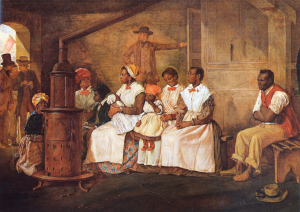 Captives awaiting auction.
Captives awaiting auction.
1790s, Estimated number of African captives crossing the Atlantic (to all Americas destinations) reaches 85,000 a year. That’s up from 30,000 a year in the 1690s. Through 1820, enslaved Africans account for nearly four of every five trans-Atlantic migrants.
1790, First U.S. Census: total population, 3.89 million; slaves, 698,000 (17.8%).
Free blacks number 60,000 (1.5% of the total). This is more than quadruple the 14,000 free blacks estimated by historians in 1775.
Many slaves gained freedom for serving in the Continental army or navy during the Revolution. Also, Massachusetts ended slavery, 1781, while other Northern states instituted gradual emancipation. Also, manumission by individual slave masters increased both North and South.
1790, Congress passes Naturalization Act of 1790, limiting U.S. citizenship to “free white persons... of good character,” excluding Indians, black people (slave or free), indentured servants of any race. However, several states do recognize free blacks as citizens within their borders.
As in British Plantation Act of 1740, courts determine eligibility and administer oaths of allegiance. Women not specifically excluded, but practice continues that they be excluded from public life.
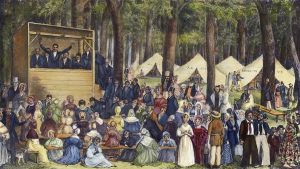 Religious townspeople gather.
Religious townspeople gather.
1790-1840, Second Great Awakening, beginning in Kentucky and Tennessee, but spreading throughout states (notably in western New York).
Evangelical and revivalist fervor among Presbyterians (who introduce camp meetings), Baptists and Methodists (who send “circuit rider” preachers far and wide).
Boosts church participation dramatically, but also sows church divisions, including over slavery.
1790, Pennsylvania state constitution calls for free public education for poor children. Wealthier families are expected to pay for their children’s schooling.
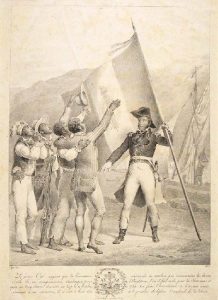 Ogé’s first step.
Ogé’s first step.
1790, Vincent Ogé, a free, Saint-Domingue mulatto planter in Paris on business, petitions new National Assembly for citizenship and voting rights for free people of color (gens de coleur libres) but not for slaves.
A first step toward what will be 13 years of bloody fighting among diverse groups in Saint-Domingue.
Returning home, Ogé organizes and arms other free men of color to press for rights. Ogé is captured, then broken on the wheel, Feb. 6, 1791; 21 supporters are hanged and 13 more are sentenced to galleys.
Separately, slaves begin to mobilize around demands for additional free days and abolition of the whip as punishment. White planters refuse to negotiate.
Background: Saint-Domingue is a rich colony, producing perhaps 40 percent of all sugar and 60 percent of all coffee consumed in Europe. It is home to 32,000 whites plus 23,000 free people of color (mulattoes and free blacks).
But life is brutal for the 500,000 black slaves. Each year, another 40,000 are imported from Africa, of whom half die, mostly of disease, within 12 months.
1791, Vermont joins Union, the 14th state, and retains its constitution banning slavery. Accepted by Congress after paying $30,000 to New York to resolve conflicting land claims.
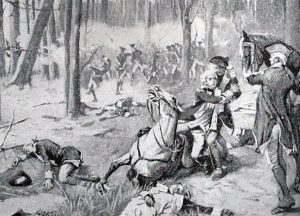 Battle of Wabash.
Battle of Wabash.
1791, Indian confederation led by Little Turtle (Miami) and Blue Jacket (Shawnee) defeat an American force of 1,000 led by Gen. Arthur St. Clair in Battle of the Wabash, near Fort Recovery, OH, Nov. 4. The two tribes reject U.S. claims to Northwest Territory based on treaties negotiated with other Indians.
More than 830 Americans are killed; only 21 escape unharmed. Indian casualties total 61. It’s the second overwhelming Indian victory in the Northwest Indian War, and among the most decisive defeats ever in U.S. military history.
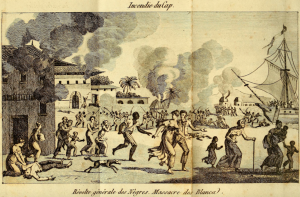 Battle at Port-au-Prince.
Battle at Port-au-Prince.
1791, In Paris, National Assembly grants citizenship and right to vote to free people of color in colonies, including freed slaves, May 15. Slavery is not addressed, however.
White planters and petit blancs in Saint-Domingue reject the Paris edict and, through the colonial assembly, continue to withhold rights from all non-whites.
Slaves finalize insurrection plans at Bois Caíman vodou ceremony where Dutty Boukeman, a slave who once worked on Jamaica, takes lead, Aug. 14. This is only six months after execution of Vincent Ogé who led uprising of freed blacks.
With the outbreak, numbers of rebel slaves quickly swell to 80,000; they burn many northern plantations, kill many whites, take others hostage. Le Cap (then Cap-François, Cap-Haïtien today) burns, Sept. 26; Port-au-Prince in October.
Boukeman dies in battle; whites mount head on stake, November; ex-slave Toussaint Louverture emerges as new leader.
In Paris, National Assembly revokes May 15 decree, Sept. 24, which pushes free people of color to join with the slaves.
1791, Wilberforce, leader of anti-slavery forces in Parliament and supported by Pitt the Younger, the prime minister, puts forth his first bill for Abolition of the Slave Trade. It fails in House of Commons, 163-88, amid negative public reaction to French Revolution and to the Saint-Domingue slave revolt, April 25.
But Wilberforce and allies sense a new momentum in their favor.
 Robert Carter III.
Robert Carter III.
1791, Robert Carter III, owner of tobacco plantations on Virginia’s Northern Neck, files a “Deed of Gift” in court, Aug. 1, directing emancipation of more than 500 slaves over the next 20 years, adults over the next five years and children as they reach adulthood (18 for women; 21 for men).
It is believed to be the largest act of manumission in the 13 colonies before the Civil War. A convert from Baptism to follow the theology of mystic Emanuel Swedenborg, Carter writes, “…I have for some time past been convinced that to retain them in Slavery is contrary to the true principles of Religion & justice…”
1791, James DeWolfe indicted in Newport, RI, for directing killing of a female slave two years earlier aboard his ship Polly. The victim, ill with smallpox (thus said to be a threat to others aboard), was bound to a chair and lowered into the sea. Prosecutor declines to pursue case. DeWolfe is later acquitted of same crime on Danish Saint Thomas, 1795.
Slave trading enriches DeWolfe family, which is believed to have transported 11,000 slaves to U.S. in 30 voyages from West Africa and Cuba before 1808 ban. A nephew continues slaving illegally afterward. Family founds bank in Bristol, RI, a slave auction house in Charleston, SC, and a slave-ship insurance company.
DeWolfe leads consortium that opens Arkwright, RI, textile mills in 1810. During War of 1812, he outfits privateers, including the Yankee, which alone captures 40 British ships worth more than $5 million.
Over the years, DeWolfe plays large role in Rhode Island politics, including serving as a U.S. senator, 1821-1825. Upon his death, Dec. 21, 1837, he is described as second only to John Jacob Astor in amassed wealth among Americans.
1792, Kentucky joins Union as the 15th state; slavery permitted.
1792, South Carolina considers legislation to ban importation of slaves, driven by fear that new slaves from Africa or the Caribbean are more likely to revolt, Saint-Domingue-style.
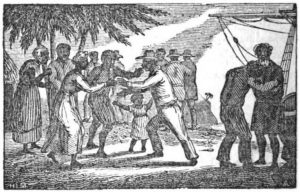 Return to Africa.
Return to Africa.
1792, Nearly 1,200 Black Loyalists, most originally American slaves who evacuated to Nova Scotia at end of Revolutionary War, depart Halifax to establish colony of Sierra Leone, supported by Wilberforce, Clarkson, Sharp and other British abolitionists.
These new settlers found Freetown and introduce American manners, fashion, even Methodism. Among them is Harry Washington, who escaped Mount Vernon after Lord Dunsmore’s Proclamation in 1775 and fought for the British.
This follows 1787 settlement in Sierra Leone of more than 300 of London’s “Black Poor.” That community failed because of disease and hostility of native Temne people.
1792, Wilberforce, with supporting speeches from Pitt the Younger and Charles James Fox, wins passage of Slave Trade Abolition Bill by the House of Commons, 230-85. But Lords reject it.
1792, Saint-Domingue’s French governor attacks rebel slaves who slip into hills, leaving behind several hundred women, children and elderly who are massacred by whites; more slaves are returned to masters only to be killed as “examples,” January.
In the south, free people of color ally with British against French, June. In the north, slaves again attack Le Cap. New commissioners from France promise freedom to slaves who help fight Spanish and British. Many agree; but more, including Louverture, go over to Spanish.
1793, Congress passes a Fugitive Slave Act to enforce the Fugitive Slave Clause in the Constitution. Signed by Pres. Washington, February.
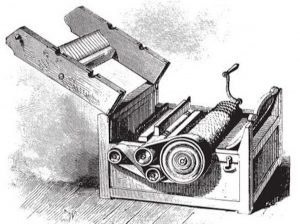 Whitney's cotton gin.
Whitney's cotton gin.
1793, Eli Whitney invents cotton gin (patent approved 1794). Each gin can clean 55 pounds of cotton a day, compared to one pound by one person by hand.
Whitney, a Connecticut Yankee, was visiting Mulberry Grove, a mainly rice plantation near Savannah owned by widow of Gen. Nathanael Greene who led patriot forces in the Carolinas.
1793, Yellow fever in Philadelphia forces Pres. Washington and national government to flee. Possibly introduced by 2,000 refugees from Saint-Domingue.
The small black community, thought to be resistant to fever (as they are to malaria), volunteers to nurse victims. More than 5,000 die between Aug. 1 and Nov. 9, or more than 9% of city’s population. Cold weather then apparently eliminates mosquitos.
1793, Assembly of new province of Upper Canada (present-day Ontario) bans importation of slaves from U.S. or elsewhere and provides for gradual emancipation of current slaves, July 9.
The law is pushed by Lt.-Gov. John Graves Simcoe after Chloe Cooley, a slave in Queenston is forcibly taken across the Niagara river to be sold in New York (an act the new olaw would not have prevented). But the law provides for freeing of chattel slaves in province after 25 years (1818) and for immediate emancipation of their children, and encourages former masters to employ ex-slaves as indentured servants.
It is the only law to limit or end slavery in any British colony before Parliament passes the Slavery Abolition Act in 1833, to gradually emancipate slaves in al British colonies. It does not apply to Lower Canada (present-day Quebec).
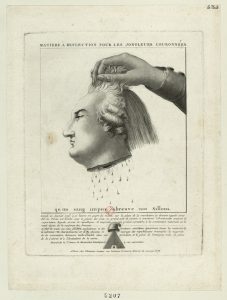 Death of Louis XVI.
Death of Louis XVI.
1793, War of First Coalition against France follows execution of Louis XVI, Jan. 21. France, declaring war on Britain, Netherlands, Spain, begins mass-conscription to build large armies.
Reign of Terror convulses France as revolutionary government reacts to both hostile armies and internal opponents. Thousands die on guillotine in Paris and tens of thousands in the rebellious Vendée while hundreds of thousands are imprisoned.
Terror runs through July 1794 when Maximilien Robespierre and many Jacobin supporters are arrested and executed.
1793, Britain signs Whitehall Accord with anti-revolutionary French slave masters from Saint-Domingue, Guadeloupe and Martinique who invite British forces to occupy islands, Feb. 19. In return, slavery is to be restored, Feb. 19.
Meanwhile, 10,000 whites flee Saint-Domingue for U.S. and Caribbean ports.
1793, In Saint-Domingue, France’s commissioner issues decree emancipating slaves in north, Aug. 29. Decrees restricting punishments and even granting pay to “laborers” follow. Land ownership becomes next goal of ex-slaves.
British forces, to ultimately number 20,000, invade Saint-Domingue’s south in support of anti-revolutionary white planters under the Whitehall Accord. They also hope to win over free people of color before attempting to take on ex-slaves to the north.
British soon control most southern ports, and take Port-au-Prince following year.
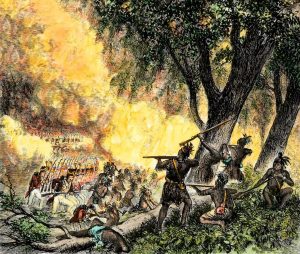 Battle of Fallen Timbers.
Battle of Fallen Timbers.
1794, Legion of U.S.—the reorganized Continental Army under Gen. Anthony Wayne—defeats Indian confederation under Blue Jacket south of present-day Toledo, Aug. 20. Brief Battle of Fallen Timbers, the last of the Northwest Indian War, determines U.S. control of Ohio Territory and removal of Indians, under a subsequent treaty (1795), to northwest corner of present-day Ohio and most of Indiana.
1794, U.S. Congress bans construction, fitting or dispatching of any vessel for slave trade.
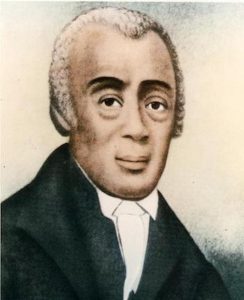 Richard Allen.
Richard Allen.
1794, In Philadelphia, Richard Allen and other black Methodists form Bethel African Methodist Episcopal Church. One of the nation’s first black congregations is dedicated July 29. Allen acts after blacks suffer many discriminatory slights in their previous, integrated church.
1794, National Convention abolishes slavery in all French territories, Feb. 4. While new law is implemented only in Saint-Domingue, Guadeloupe and Guiana, it inspires uprisings throughout Caribbean.
This dramatic emancipation act will be repealed by Napoléon in 1802.
1794, British fleet takes Martinique and reinstates regime controlled by French planters, as per the Whitehall Accord, March 30. Thus slavery continues on island despite National Convention’s act of abolition.
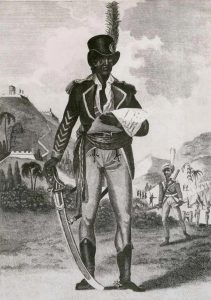 Toussaint Louverture.
Toussaint Louverture.
1794, In Saint-Domingue, Louverture abandons Spanish army and joins with the French in wake of France’s abolition of slavery and Spanish refusal to follow suit, May 6. His lieutenants now include Jean-Jacques Dessalines and Henri Cristophe. Their army of ex-slaves begins attacks from north on British forces occupying central and southern Saint-Domingue.
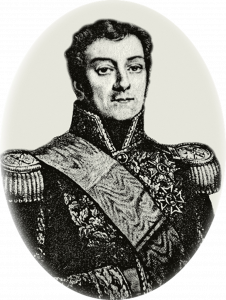
Victor Hugues.
1794, On Guadeloupe, newly freed slaves gain full rights under new French laws. Britain invades to support white colonists (British also take St. Lucia). France responds with a small force under Victor Hugues who wins over ex-slaves and retakes island. Hundreds of white colonists go to the guillotine.
Hugues organizes integrated army, but 1796 attempt to take Anguilla fails. Hugues also launches privateers against Caribbean shipping, including American ships during France’s “Quasi War” with U.S. American Navy cooperates with British against these privateers.
1794, São José Paquete Africa, a Portuguese slaver, founders while carrying as many as 500 slaves from Island of Mozambique to Maranhão, northern Brazil. The 7,000-mile voyage was expected to take four months, but ship strikes reefs off Camps Bay (South Africa). Crew and perhaps 290 slaves are rescued, but all others are lost, Jan. 1. Survivors sold into slavery in the Dutch Cape Colony.
Wreck, discovered in 1980s, is not correctly, officially identified until 2015.
1795, Jean Étienne de Boré produces first granulated sugar in Louisiana, still held by Spain, on his indigo plantation near New Orleans. De Boré credits Antoine Morin, a refugee from Saint-Domingue, for developing the mill to complete the processing. Louisiana counts 75 sugar mills by 1812.
De Boré goes on to be the first mayor of New Orleans under U.S. rule, 1803.
1795, France gains control of all of Hispaniola in Peace of Basel, as Louverture gradually establishes his military strength in dealing with French governor.
In Paris, Directory takes over government, vows to keep Saint-Domingue “both French and free,” October.
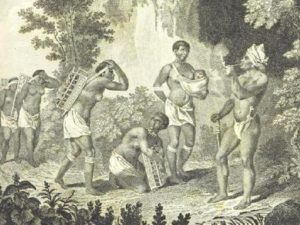 Group of Black Caribs.
Group of Black Caribs.
1795, Black Caribs in the north of St. Vincent, who have never been subjugated, take the British plantations to the south except for Kingstown, the capital, March. Their chief, Chatoyer, gets help from French troops sent from Martinique by Victor Hugues.
But they are crushed two years later by a large force under Gen. Ralph Abercromby. Chatoyer is killed and more than 5,000 of the darker Black Caribs are banished to tiny Baliceaux in the nearby Grenadines, where half die from disease and exposure. Survivors are moved to Roatán off Honduras. From there they settle in communities on the Honduran and Belize coast, becoming known as the Garifuna people.
A small number of lighter Caribs are joined by new African slaves to work on expanded plantations (sugar, coffee, cotton).
1795, Revolt of more than 1,000 slaves on Netherlands’ Curaçao plantations, led by Tula Rigaud, Louis Mercier, Bastian Karpata, Pedro Wakao. Gunfights alternate with negotiations over a month. Several whites and 20 slaves die; the leaders are executed, Tula by torture.
1795, On Jamaica, Second Maroon War pits one group of Leeward Maroons vs. 5,000 troops, white militia and a rival Maroon group. Plantations burned, many slaves freed and British forces suffer far more casualties than do Maroons. But Maroon territory is laid to waste and they sign treaty.
The following year, duplicitous governor deports 581 rebel Maroons to Nova Scotia. Most go on to Sierra Leone in 1800; some descendants return to Jamaica after slavery is abolished.
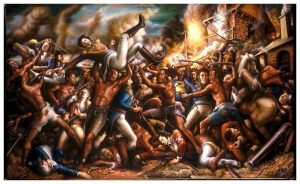 More than 7,000 die.
More than 7,000 die.
1795, On Grenada, free blacks, slaves and French whites revolt against British rule, March. Insurrection is led by Julian Fédon, a mulatto planter appointed a captain by French and inspired by France’s abolition of slavery. Half of island’s total slave population of 28,000 takes part; 7,000 die, including at least 40 white hostages. Rebels take over island except St. George’s. British reinforcements prevail, June 1796. Leaders executed, many others deported; Fédon never found.
Sugar prices soar: Taken altogether, unrest slashes West Indies sugar production significantly.
1795, In Venezuela, slaves rise up in Santa Ana de Coro, May 10, led by José Leonardo Chirino, a free zambo (African and Indian) inspired by visit to Saint-Domingue and by ideals of the French Revolution. The rebels are suppressed, Chirino executed and his children sold into slavery.
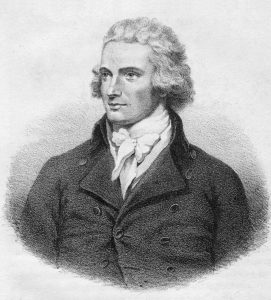 Mungo Park.
Mungo Park.
1795, Scottish explorer Mungo Park ventures up Gambia river and then begins descent of Niger, a first for Europeans who believe it may somehow connect with the Congo. Park encounters slave caravans bound for Gambia and later describes the gold-for-salt trade, as well as the slave trade among Islamic and pagan peoples, and between individuals. Returns to Gambia with black slavers leading captives in a coffle. A packed American slaver takes him to Antigua; from there he sails back to England in 1797.
On a second, 1,000 mile-plus descent of the Niger in 1805, most of Park’s party dies of disease before he drowns in a confrontation with locals at Bussa.
Richard Lander finally completes a descent to Niger delta in 1830.
1795, Agonglo, king of Dahomey, sends emissaries to Salvador, Brazil, asking that Brazil trade only with Whydah for Slave Coast captives. Agonglo is concerned about sudden fall-off in French demand for slaves thanks to Saint-Domingue uprising and France’s abolition of slavery.
Mission is renewed in 1805 by Angonglo’s son who complains of cheating in the count of slaves at the Portuguese factory in Whydah.
In 1811, the king sends four emissaries to Salvador and an enslaved girl as a gift for Prince Regent João of Portugal. But the latter is now ensconced in Rio de Janiero and declines to receive the Dahomians.
1795, Britain seizes the Cape Colony. Dutch regain it briefly in 1802, but British return in 1806.
1796, Tennessee joins Union as the 16th state, slavery permitted.
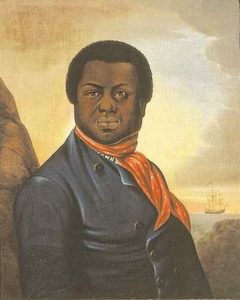 Paul Cuffe.
Paul Cuffe.
1797, Paul Cuffe builds a school on his new Westport, MA, farm and opens it to all children, possibly the nation’s first integrated school. Cuffe is the free son of an Ashanti-born slave (freed by his Quaker master) and a Wampanoag mother.
Cuffe goes on to become a wealthy shipbuilder, merchant and, with his fellow Quakers, an abolitionist. He will sail to Sierra Leone in 1811 to explore business opportunities and possible settlement by American blacks.
1797, British under Gen. Abercromby land on Trinidad, where the Spanish governor capitulates without a fight, February. British possession is affirmed by Treaty of Amiens, 1802.
Abercromby has less luck with Puerto Rico. His assault on San Juan is turned back and he departs May 1.
1797, Louverture, named commander in chief of French forces in Saint-Domingue, drives British from most of north; André Rigaud’s army (mainly free people of color) does likewise in the south. British negotiate peace with Louverture and withdraw, March 1798.
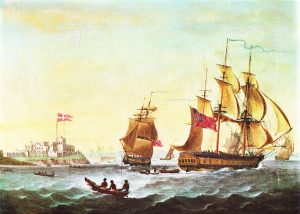 1798, Year-old Parr, out of Liverpool and the largest British slaver, explodes and sinks after embarking possibly 700 slaves at Bonny island (in the Niger delta), February. Only 300 slaves and 29 crew (but not the captain) are said to survive. Slaves placed on other ships to complete voyage to West Indies.
1798, Year-old Parr, out of Liverpool and the largest British slaver, explodes and sinks after embarking possibly 700 slaves at Bonny island (in the Niger delta), February. Only 300 slaves and 29 crew (but not the captain) are said to survive. Slaves placed on other ships to complete voyage to West Indies.
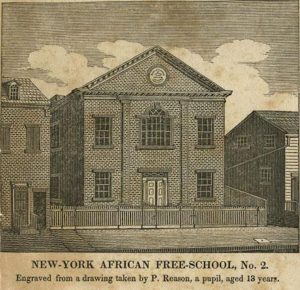 New York Manumission Society.
New York Manumission Society.
1799, New York state legislature passes gradual emancipation law, March 20. Children of slaves born after July 1799 to serve as “indentured servants” to age 28, males; age 25, females. Slaves born before are also redefined as indentured servants but required to continue unpaid labor. It’s not until 1817 that state votes to fully free all new indentured servants born before July 4, 1799, effective in 1827.
With New York’s vote, all states north of the Mason-Dixon line have acted to end slavery by law or in effective practice (New Hampshire), or will do so in relatively near future.
Pushed through by Gov. John Jay who, with Alexander Hamilton, founded the New York Manumission Society in 1785 (more than half of whose members own slaves). Jay continues to buy slaves, whom he eventually frees, through 1810.
1799, Washington dies at 67, Dec. 14. His valet is freed immediately, according to his will. Remaining 123 slaves are to be freed upon death of Martha (who actually frees them in 1801, a year before she dies).
1799, Following several military successes in Egypt, Napoléon overthrows the Directory in Paris, and takes power in France as first consul, November. France’s wars with Britain, Austria, Russia and other nations continue.
 Toussaint Louverture.
Toussaint Louverture.
1799, With British gone from Saint-Domingue, “War of Knives” breaks out in July between Louverture in the north (mainly ex-slaves) and Rigaud in the south (mainly free mulattos). Rigaud’s forces massacre many whites and opposing blacks; Louverture’s do likewise in north. USS General Greene (engaged in the brief “Quasi-War” with French privateers) bombards Rigaud forces at Jacmel in support of Louverture, February 1800. By July, Dessalines administers final defeat on Rigaud who flees to France.
Louverture, reaffirmed by Napoléon as supreme commander of 20,000-man army in Saint-Domingue, imposes schools and other social reforms. But he also seeks to restore plantations (including several commandeered by him and his generals) to rebuild sugar economy. He calls for disciplining recalcitrant workers and bringing in more Africans. His ex-slave supporters massively object.
